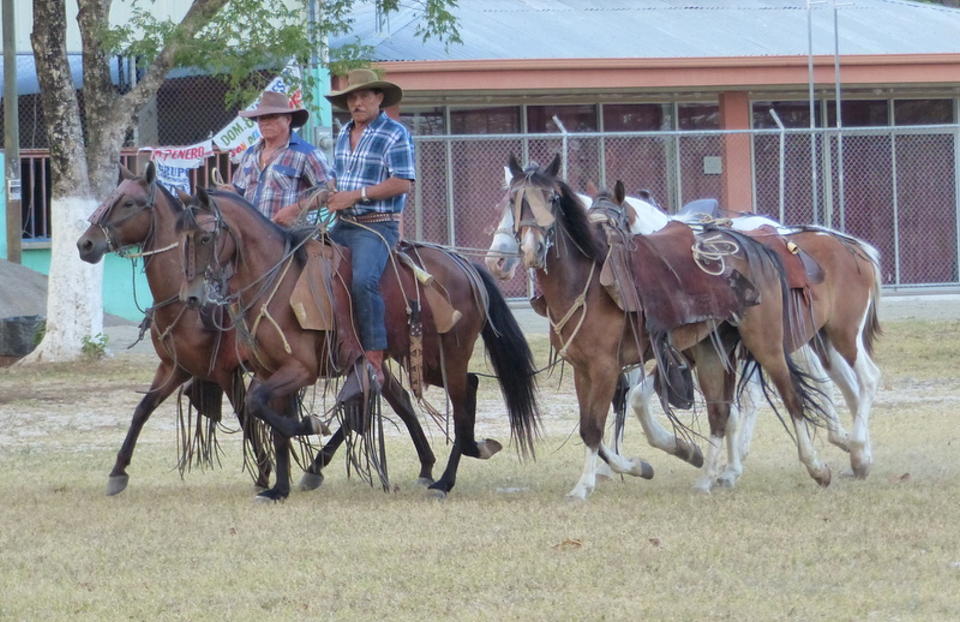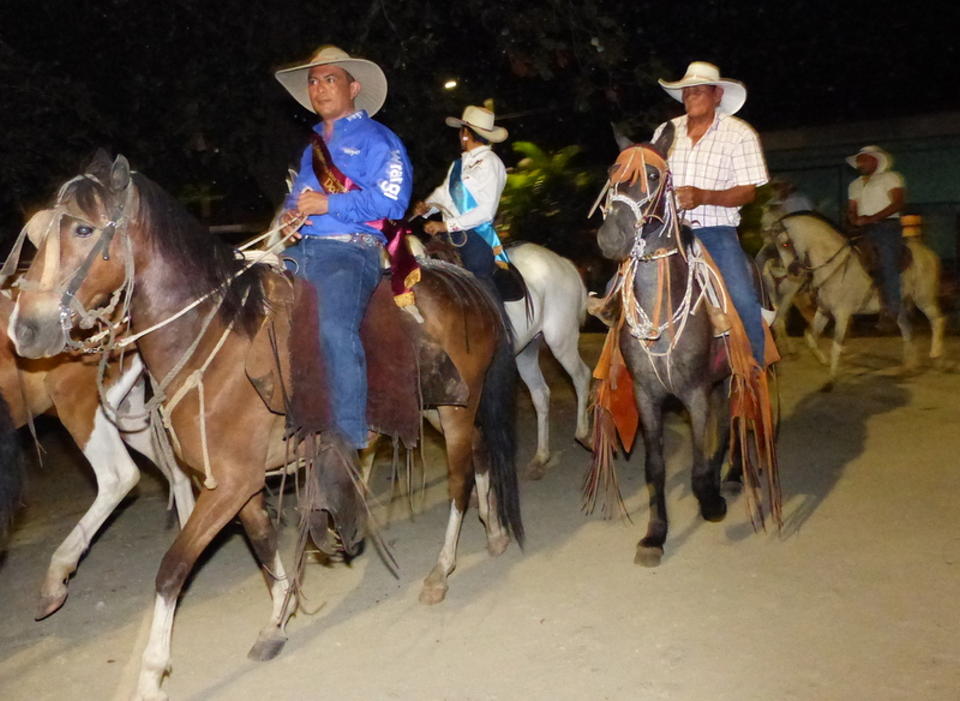Costa Rica News – Costa Rican love horses, even if they live in the midst of dense urban sprawl and wouldn’t know a horse pucky if they stepped in one. Two Tico traditions easily seen in all parts of the country are topes and cabalgatas. These events are emblematic of the rich horse and cattle heritage of the country. Ranching and cowboy, sabanero, traditions are especially strong in the northwest province of Guanacaste.
A cabalgata is a recreational horseback ride, a trail ride, from one place to another. It is more for the enjoyment of the riders than any observers. Many places have these rides as annual events. Sometimes there is an entrance fee to raise money for some worthy cause.
One very interesting cabalgata takes place on the night of the full moon every March. As the bright moon rises over the town square, the troop leaves the town of Tempate de Santa Cruz and heads through the hills on a gravel road to Playa Potrero on the coast. The ride takes about two hours and they split up as they enter Potrero, some going directly to the party and others circling around to make their approach by way of the beach. A small musical group rides along playing from the back of a 4 x 4 pickup truck. For the sake of tradition, the riders also drive steer or a bull. They call it a toro, a bull, and people in Potrero are duly cautious. The animal had big horns; it was very dark; I did not think a closer inspection of the beast’s privates would be prudent.
A big party awaits the riders at the end of the trail. After the merriment, the more affluent riders load up their mounts and leave by truck. Some sad looking souls have to ride back the same dark trail to Tempate, after having consumed an ample amount of beer.
A tope is a horse parade strictly for show, following an established route through a populated area for the benefit of the spectators. As many riders and their mounts as can be found will parade through town, strutting their stuff for the appreciative crowd.
The verb ‘topar’ in Spanish means to bump; ‘toparse’ con means to bump into (somebody). In days of old, livestock came and went through the ports. They made the journey between the ports and the ranches over rough roads in drives. They were, if you will, bumped along the road by cowboys. Thus, the term tope came to be used for a horse parade. Many fiestas and even religious events will feature a tope as part of the festivities.
One sure crowd pleaser at all topes is the Costa Rican Step Horse. These animals are rigorously trained to dance or high step their way along the parade routes. They are very impressive to watch.
Jack Donnelly has been a life-long enthusiast of Latin American folk culture. Donnelly is the author of COSTA RICA: Folk Culture, Traditions, and Cuisine which is available on Amazon in paperback and Kindle. Now, lives in Heredia, Costa Rica. He travels around the country investigating and documenting folkloric events.


